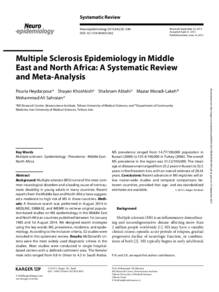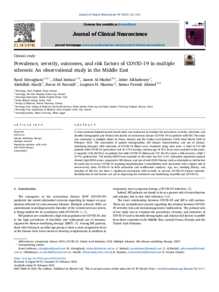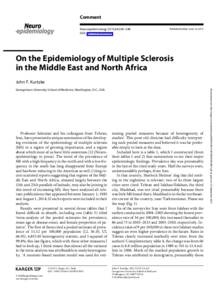Document
Multiple sclerosis epidemiology in Middle East and North Africa : a systematic review and meta-analysis.
Identifier
DOI: 10.1159/000431042
Contributors
Khoshkish, Shayan., Author
Abtahi, Shabnam., Author
Moradi-Lakeh, Maziar., Author
Sahraian, Mohammad Ali., Author
Publisher
S. Karger AG.
Gregorian
2015-08
Language
English
English abstract
Background: Multiple sclerosis (MS) is one of the most common neurological disorders and a leading cause of nontraumatic disability in young adults in many countries. Recent reports from the Middle East and North Africa have suggested a moderate to high risk of MS in these countries. Methods: A literature search was performed in August 2014 in MEDLINE, EMBASE, and IMEMR to retrieve original population-based studies on MS epidemiology in the Middle East and North African countries published between 1st January 1985 and 1st August 2014. We designed search strategies using the key words: MS, prevalence, incidence, and epidemiology. According to the inclusion criteria, 52 studies were included in this systematic review. Results: McDonald's criteria were the most widely used diagnostic criteria in the studies. Most studies were conducted in single hospitalbased centers with a defined catchment area. The female/male ratio ranged from 0.8 in Oman to 4.3 in Saudi Arabia. MS prevalence ranged from 14.77/100,000 population in Kuwait (2000) to 101.4/100,000 in Turkey (2006). The overall MS prevalence in the region was 51.52/100,000. The mean age at disease onset ranged from 25.2 years in Kuwait to 32.5 years in Northeastern Iran, with an overall estimate of 28.54 years. Conclusions: Recent advances in MS registries will allow nation-wide studies and temporal comparisons between countries, provided that age- and sex-standardized estimates are available.
Member of
ISSN
0251-5350
Resource URL
Category
Journal articles



